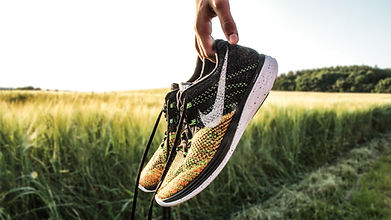
The Science

Wolff's Law
Theory developed by the German
Anatomist/Surgeon Julius Wolff (1836-1902) in the 19th century stated that bone in a healthy person or animal will adapt to the loads it is placed under. If loading on a particular bone increases, the bone will remodel itself over time to become stronger to resist that sort of loading.
The external cortical portion of the bone becomes thicker as a result. The converse is true as well: if the loading on a bone decreases, the bone will become weaker due to turnover as it is less metabolically costly to maintain and there is no stimulus for continued remodeling that is required to maintain bone mass.
*Please consult with your physician about your health limitations.
On Muscle Strength
A study cited in the Journal of Applied Physiology examined the effects of adding weight to strength training of subjects who already had a steady level of performance.
The weight vest research study took place 3 days a week for 10 weeks. Leg strength was increased by 30% and short-term endurance during cycling and running was increased by 11-13%.


On Running Speed
Another study, conducted by researcher Helkki Rusko, stated that the improvement occurred while running with a weight vest. Using twelve well-trained athletes as his subjects, he gave them weight vests that weighed 10% of their body weight.
Rusko made subjects wear the weight vests throughout the entire day as well as during at least three of eight weekly workouts. After four weeks, the results his subjects experienced were negative, they needed more oxygen to run at a given pace. He asked his subjects to take the weight vests off and resume normal training and retested them two weeks later and this time he witnessed endurance while sprinting rise by 25% and stair running speed increase by 3%.
On Jumping Height
The Journal of Athletic Training published a study lead by Avery Faigenbaum: Dynamic Warm-Up Protocols, With and Without a Weighted Vest. They looked at the differences in performance of athletic tests in a group of female high school athletes who warmed-up with and without using adjustable weighted vests.
The vests were adjusted to 2% of body weight in one group and 6% in another group. The authors concluded that using a 2% of bodyweight adjustable vest may be the most effective dynamic warm-up for enhancing jumping performance. Participants in the study improved by 12.5% using a dynamic warm-up with a weighted vest compared to doing static stretching. The same athlete’s vertical jump performance went up by 13.5%.


On Bone Density
Harvard Medical School completed a study claiming that “Physical activity that puts some strain or stress on bones causes the bones to retain and possibly even gain density throughout life.
Cells within the bone sense this stress and respond by making the bone stronger and denser. Such ‘weight-bearing’ exercises include walking, dancing, jogging, weightlifting, stair-climbing, and hiking.”

